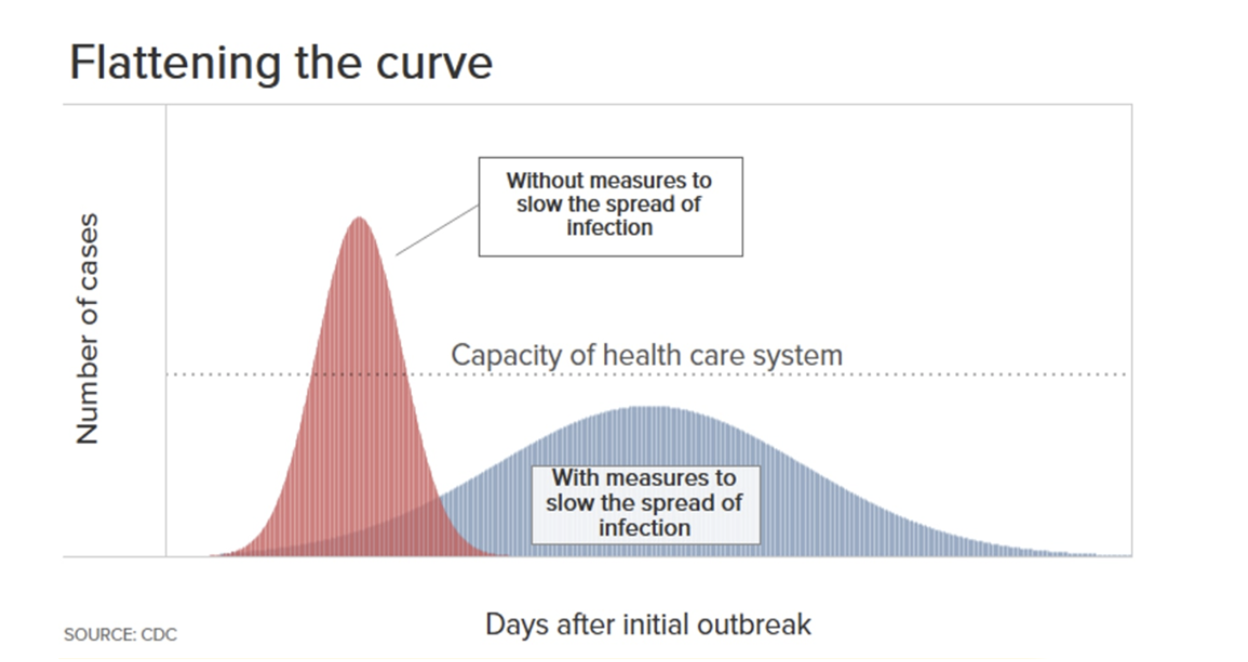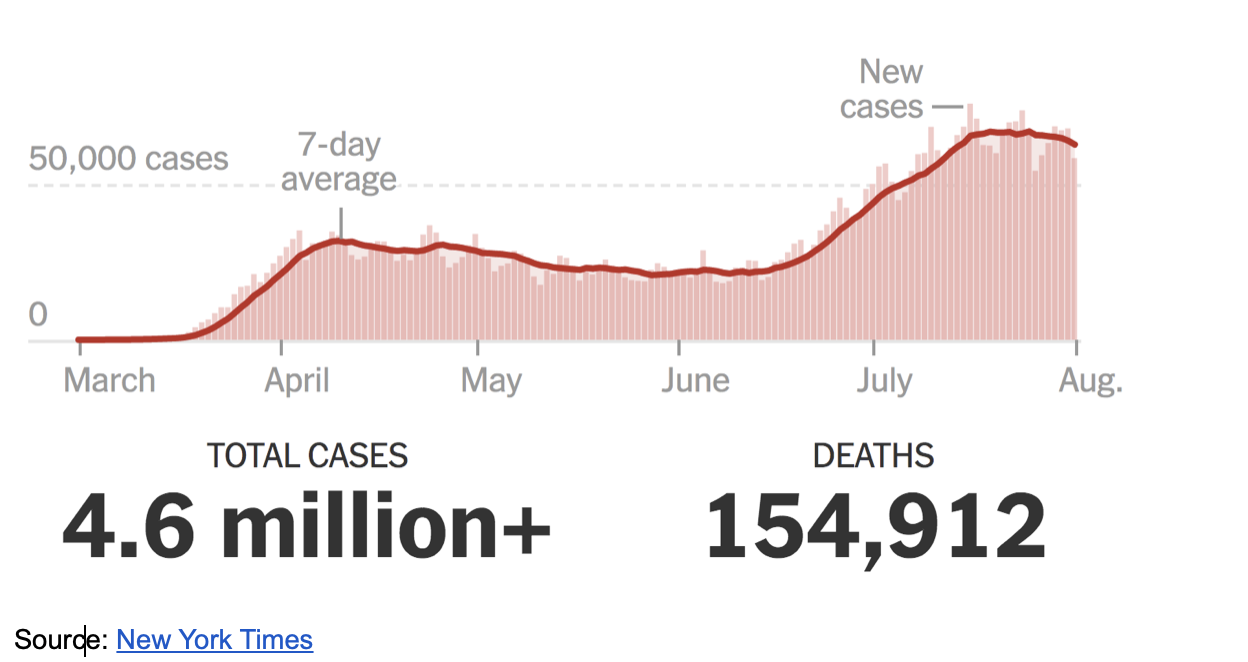Should Law Schools Be In Person Or Remote This Fall?
Tough choices for law schools.
 On April 26, 2020, Christina Paxson, the President of Brown University, penned an inspiring opinion piece published by the New York Times: “College Campuses Must Reopen in the Fall,” which can be read in full here. Her points were well-minded and sensible. They spoke of the importance of higher education to the livelihood of not just 3 million employees, but the US economy as a whole. President Paxson noted that “students face financial, practical and psychological barriers as they try to learn remotely,” and that by being in person “students will still benefit from all that makes in-person education so valuable: the fierce intellectual debates that just aren’t the same on Zoom, the research opportunities in university laboratories and libraries and the personal interactions among students with different perspectives and life experiences.” It was a compelling argument for pursuing an in-person experience in the Fall 2020 semester that served, I believe, to many higher education administrators as a rallying cry and green light to pursue an in-person education this fall. I spoke to some of those administrators soon after the article was published, and they were inspired. I was too, and I was hopeful that schools would be open on campus in the fall. President Paxson’s words were also written just as it looked that things were moving in the right direction nationally. We are all now familiar with the terminology “flattening the curve,” and many of us thought that with the mitigation efforts being implemented at the federal, state, and local level, we were on our way there.
On April 26, 2020, Christina Paxson, the President of Brown University, penned an inspiring opinion piece published by the New York Times: “College Campuses Must Reopen in the Fall,” which can be read in full here. Her points were well-minded and sensible. They spoke of the importance of higher education to the livelihood of not just 3 million employees, but the US economy as a whole. President Paxson noted that “students face financial, practical and psychological barriers as they try to learn remotely,” and that by being in person “students will still benefit from all that makes in-person education so valuable: the fierce intellectual debates that just aren’t the same on Zoom, the research opportunities in university laboratories and libraries and the personal interactions among students with different perspectives and life experiences.” It was a compelling argument for pursuing an in-person experience in the Fall 2020 semester that served, I believe, to many higher education administrators as a rallying cry and green light to pursue an in-person education this fall. I spoke to some of those administrators soon after the article was published, and they were inspired. I was too, and I was hopeful that schools would be open on campus in the fall. President Paxson’s words were also written just as it looked that things were moving in the right direction nationally. We are all now familiar with the terminology “flattening the curve,” and many of us thought that with the mitigation efforts being implemented at the federal, state, and local level, we were on our way there.

Today, a little more than three months later, this is what has actually happened in the United States. Not the flattened curved model we were all optimistically hoping for but rather one singular wave that plateaued for a while, too high, and that has only grown larger with time.

How Savvy Lawyers Build Their Law Firm Rate Sheet

Just as saliently, the age group that increasingly appears to be taking up a larger and larger share of total COVID infections has shifted in an unexpected direction, with more and more states and counties reporting people age 20-29 as the highest source of new infections. In California, for example — incidentally one of the states where we have seen a number of law schools go fully online — the highest age cohort of those who have contracted COVID-19 is now 18-34 years old, representing 35.4% of all cases.
College and graduate school administrators were inspired by the Paxson missive, but when they were starting to make plans for the fall there was evidence, at the time, that the second wave (which most of us were also starting to learn was the much more deadly one in our last global pandemic, the Spanish Flu of 1918) might come in the late fall. But COVID-19 is novel and thus unpredictable, and these projections were wrong.
To be certain, law schools, which I will solely discuss for the rest of this article, do not function precisely as colleges and universities do. Most importantly as related to the pandemic, they do not rely on room, board, and dining fees for a large source of their revenue: They primarily do not have students in their late teens or very early twenties, where the tendency toward risky activity peaks (per Laurence Steinberg, professor of psychology at Temple University). They have smaller populations of students than the average college or university, sometimes in great measure, and thus have more ability than a university to be nimble. To test more. To trace. In theory, to physically separate. All parts of the mitigation efforts President Paxson alluded to for schools to safely open.
Sponsored

How To Build And Manage Your Law Firm Rate Sheet

How Savvy Lawyers Build Their Law Firm Rate Sheet

Not All Legal AI Is Created Equal


Not All Legal AI Is Created Equal

Does this mean they should open in person in the fall? According to an informal poll of law school students, staff and faculty, approximately 64% of a total 846 respondents do not believe so.

To date, at least 20 law schools have announced they will be fully online in fall. Those 20 can be found here. Another sizable percentage will be primarily remote — meaning while they will bring the students who chose to partake in on-campus classes back to their respective locations, most of their classes, but not all, will be online.
It is now my belief, which has shifted since the April 26 article I have alluded to, that law schools should switch to a primarily, if not entirely, remote format for the Fall 2020 semester. Here is why.
Quality of Education
Sponsored

A Law Firm Checklist For Successful Transaction Management


Trust The Process: How To Build And Manage Workflows In Law Firms
Let’s first discuss what “in-person” learning will actually be like this fall. No law school that I am aware of plans to offer classes “as they were” so to speak. The default model seems to be “hybrid.” To be frank, the debate is not whether schools should be online or in person, but whether they should be attempting a hybrid-program with significant in-person opportunities.
Many such plans hybrid require rotating a certain percentage of students to in-person classes, while others attend online — a given student in a twice-weekly class might actually only be able to attend in-person once, for example. Any in-person experience in the hybrid model will follow strict protective requirements. Masks will be mandatory for students and faculty — making it harder for interactive learning in a room where participants are scattered as far as possible from each other, given minimum six-foot distancing. Faculty will be trying to split their attention between their in-person students and those participating remotely, as required by “synchronous” learning. There will be no breaking out into small groups for discussion, no opportunity for faculty to hand out material. After-class discussions or gatherings are absolutely out, as plans generally require all students and faculty vacate the area immediately, and they are high-risk behaviors regardless. These sorts of pedagogical techniques are the main advantage of in-person rather than remote learning, but in a hybrid setting they’re not feasible, or at best they’re usable only in the same sorts of ways they could be tried if learning is all-remote.
And of course, there are the non-class aspects of law school which will be negatively impacted. Office hours are likely to be primarily remote. Guest lectures, networking luncheons, club meetings — all have been severely curtailed at best, if not outright cancelled. On-campus interview programs are being moved to a remote format. The social and networking aspects of the fall semester have already been effectively neutered.
Is online law school ideal? For many students and faculty — probably most — it’s not. Students have expressed legitimate concerns about online classes, ranging from difficulty interacting with faculty to the challenges of at-home distractions. Faculty have worries over ensuring adequate student participation, difficulty in assessing how well students are understanding material, and the inevitable time-zone and technological glitches and challenges. There is a reason why I, and so many others, were hopeful in May and June that there could be significant in-person learning: it is the ideal.
But contrast the negatives of online school with the current alternative. What students who show up in the fall receive will be a pale shadow of a normal in-person experience. Now weigh that against the negatives of online classes. In my view, the difference between fully remote and “in-person” classes, when accounting for the truth of what these in-person classes will actually entail, is minimal. By committing to a fully online program, law schools could enhance their online offerings. Instead of trying to be the best of all things and spreading themselves too thin, faculty and staff could be fully dedicated to making the online experience the absolute best it can be. This is the exact reasoning that Harvard Law School used when making the decision to go online, stating “it was highly likely that the net impact on educational quality from hybrid learning would be negative rather than positive.” It’s also the reasoning we’ve seen numerous law school faculty use when explaining their support for all-online learning. Without even considering the potential for COVID-19 spread, there is an argument for switching to an online learning modality versus a hybrid model.
Health and Safety
Law schools have spent a great deal of time and effort creating plans to minimize the opportunity for spreading COVID-19 on their campuses. There are two critical problems I see with these plans.
First, they were created at a time when COVID-19 cases were declining nationally. A predictive model put together by Morgan Stanley showed just that, and there was some belief in the medical community the SARS-CoV-2 might behave like other coronaviruses and diminish in summer weather and come back in late fall. That model is visualized here.

Many schools enacted a plan to start early and send everyone home by Thanksgiving — getting students in and out during the lull between the first and second waves. Unfortunately, we are now seeing between sixty and seventy thousand cases daily in the United States. This is not simply due to increased testing; positivity rates hover between 8% and 9% nationally. The virus is spreading, largely uncontrolled, in many areas of the country. Just as of the writing of this article, Sunday, August 2, Dr. Deborah Birx, the Coronavirus Response Coordinator for the White House Coronavirus Task Force, declared, “What we are seeing today is different from March and April. It is extraordinarily widespread.”
Second, these plans rely on the assumption that participants will actually adhere to strict behavioral requirements. The unfortunate reality of the last several months is that we’ve seen time and again that universal adherence to mitigation efforts is a flawed assumption. Students will gather. Not all will socially distance. Some will engage in risky behaviors. And they will spread the disease on campus. In fact, this is already happening — just this past week, the entire Rutgers football team was placed into quarantine after 15 players tested positive for COVID-19 after multiple players attended an on-campus indoor party. Students will infect one another, as well as others with whom they come into contact: staff, faculty, and the wider communities in which students live are not immune to risk-taking behavior.
But, many will argue, even if many students contract the disease, it’s highly likely that the significant majority would be absolutely fine. And that is generally true. While we are still learning about the virus and its long-term effects, it is clear that the age group in which most students reside is not at major risk for serious illness or death.
However, the law of large numbers works against us. There are over 112,000 law students at ABA-accredited schools. Current estimates for the mortality rate in the age range of the typical law student are somewhere between 0.1% and 0.3%. Not every law student will contract COVID-19 if schools reopen, of course, but even so, law school reopenings will likely lead to some number of deaths. And as we’re learning, some portion of those who become ill, even with just a mild case of the disease, will be left with serious long-term health problems that we just don’t yet have a complete understanding of. We don’t have good numbers for those instances yet either, which is another argument for proceeding with extreme caution. The cavalier attitude of “young people are going to be fine” is dangerously misleading — and worse, it encourages the exact type of risk-taking behavior that leads to the spread of the disease in at-risk groups.
Even if there were a guarantee that all law students would be absolutely fine, the virus is exceptionally contagious. While it is currently impossible to ascribe an exact reproductive number to SARS-CoV-2, per epidemiologist Benjamin Ridenhour as recently as July 13, it could range from around 1.3 to 4. Any reproductive number in the community above 1 means the virus is growing in the population, and a number as high as 4 would place COVID-19 ahead of just about any outbreak we have seen in modern times, including the Spanish Flu of 1918.
Each infected student is a disease vector. Faculty and staff assume risk by virtue of their interaction with students, their transit to and from classrooms and offices, and their participation in (admittedly rare this fall) campus events. Anyone who has attended law school knows that a significant share of the faculty are in a higher risk age group. Beyond the obvious tragedy it would be if a staff member or professor became ill or died, there are logistical questions. How will schools handle replacing professors — potentially numerous professors — in the middle of a semester? The quality of learning will undoubtedly suffer if original faculty need to be replaced a third of the way into the semester. Do schools have the necessary backup faculty to handle a serious outbreak — without requiring the remaining staff to take on an undue burden, which would in turn lead to diminished learning outcomes for students?
Beyond that, a group that is unfortunately often left out of the conversation is the greater community in which the law school resides. Even if students stay in small cohorts, any law school classroom will have rotating groups of students in and out. The necessary frequent cleaning of indoor surfaces creates risk for the increased janitorial staff who will not only walk in and out of rooms with potentially infectious airborne droplets, but also wipe down surfaces touched by dozens or hundreds of students. Cleaners, many lacking paid sick leave, say they are concerned about exposure to the virus “we’re an afterthought.” There is no magical barrier blocking the spread of a campus-based outbreak to the surrounding town or city. It’s quite easy to envision a scenario wherein reopened schools — including law schools — become the epicenter of new infection hot spots. For years law schools have held themselves as part of key pillars in their communities, but with the health of these communities at risk, some have seemingly disappeared from this conversation.
The Inevitability of Online Classes
Schools should also consider the fact that, if they return to in-person education, there is a significant chance that they will end up switching to remote instruction at some point in the semester. Point of fact, I would hope that they have a very itchy trigger finger on just that. This is what compels me to form the conclusion that they should not open if even remotely on the fence. We return to the simple fact that college and university campuses are natural viral hotspots. If law schools open now, while there is still such a tremendous viral reservoir nationwide, they will almost inevitably spread the disease. We have not seen many institutional plans that put precise numbers on what threshold of infection would result in a return to online instruction. But in the face of rising student and staff case counts, law schools will absolutely make the switch. At that point, what exactly has been accomplished? A few weeks of in-person education, at the cost of potential widespread infection in the law school — and the surrounding community? Is that truly worth it?
In Summary
So much of this decision-making is understandably made by administrators who are looking at a dire financial cliff, and President Paxson alluded to these economic consequences. But we aren’t just fighting an economic war — not even remotely. To date, as many Americans have died from COVID-19 as three Vietnam Wars. One of the early law schools who announced they would be shutting their doors and moving to fully online learning in the fall, Ave Maria, published this message from their president and dean, Kevin Cieply, to the students. Per Dean Cieply:
I am aware of the downsides of online education. I am an online student myself. I am pursuing a doctorate degree from Vanderbilt, all online. I realize it can be isolating. I understand how hard it can be to fit in studying, and how disruptive it can be when you are trying to focus on class with family members around. It has its challenges, for sure.
I weighed the health risks for our students, faculty and staff.
Overall (totality of the circumstances in criminal law parlance), I believe that staying online is our best of several options.
I personally know Kevin Cieply. I visited him a few years ago at his law school, and he walked with me as he showed me their buildings and campus. Every student who walked by, without fault, he greeted by first name. He knew the name of every one of the roughly 300 students in his care. Do I think it is required, or even feasible that every law dean know the names of their entire student body on sight? Not remotely — I know the decanal life and how busy it is. But I do think the degree to which Dean Cieply personally knows his students came into play with his decision. So, while I personally am not looking at the financial outcomes of any one given school and the stewardship responsibilities that the decision-makers have in keeping their law schools financially afloat, I also think administrators should reflect on those students they do know by name. Do you want them to catch the virus in week one of class, spread it to their peers, and then interact with the local community before being sent home?
The virus isn’t going anywhere. It is a biological pathogen with no predators and nearly unlimited resources (that being us). Evolution has taught us that in these conditions the pathogen will always thrive. Until we have an effective vaccine — and to be clear, widespread vaccination — you could argue it is our civic duty to fight this war with the only means at our disposal. That means mitigation efforts such as social distancing. It means, to me, that if any law school sees there is likely potential for greater infection, they should strongly consider staying online in the fall and potentially even spring.
There are pedagogical arguments for a remote semester. There are health arguments for a remote semester. There are societal arguments for a remote semester. There are undeniably hard choices to be made about the seemingly irreplaceable aspects of a semester of in-person classes (which will not be at all the same regardless) relative to the costs we will incur to have them. I fear that if those decisions are not made now, but rather ad hoc after migrating law students across the country to put them in classes and community living arrangements to then send them back home, law schools will potentially only further exacerbate the most dire epidemic we have seen in modern times.
Mike Spivey is the founder of The Spivey Consulting Group and has been featured as an expert on law schools and law school admissions in many national media outlets, including The New York Times, The Economist, the ABA Journal, The Chronicle of Higher Education, U.S. News & World Report, CNN/Fortune, and Law. Prior to founding Spivey Consulting, Mike was a senior level administrator at Vanderbilt, Washington University, and Colorado law schools. You can follow him on Twitter and Instagram or connect with him LinkedIn.







